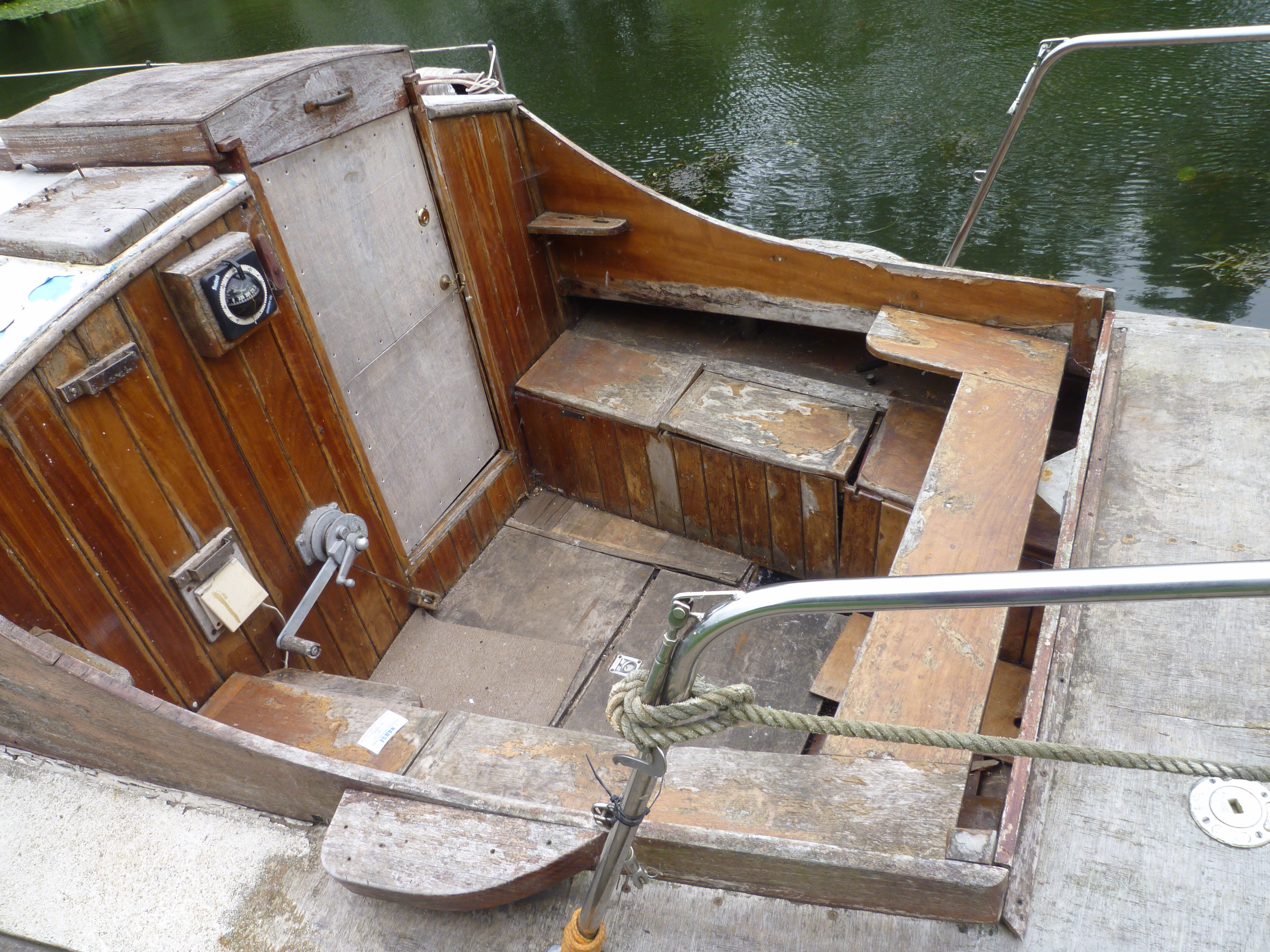
Unknown Finesse on a river mooring inland from Boston, Lincs. The sun has burnt the varnish away, but it is the rain that ruins the superstructure (Pictures: Dave May)
“What’s a little wet to a water-rat?” asks Ratty when Mole apologises for upsetting their rowing boat in Kenneth Graham’s Wind in the Willows. What’s a little wet for a wooden boat, for that matter? Well, it depends on where it comes from. Water from below- especially salt water- is considered to be beneficial in strict moderation, helping the planks to take up to seal any leaks and at the same time preserving them. Water from the air, however (rain and condensation) does nothing but harm.
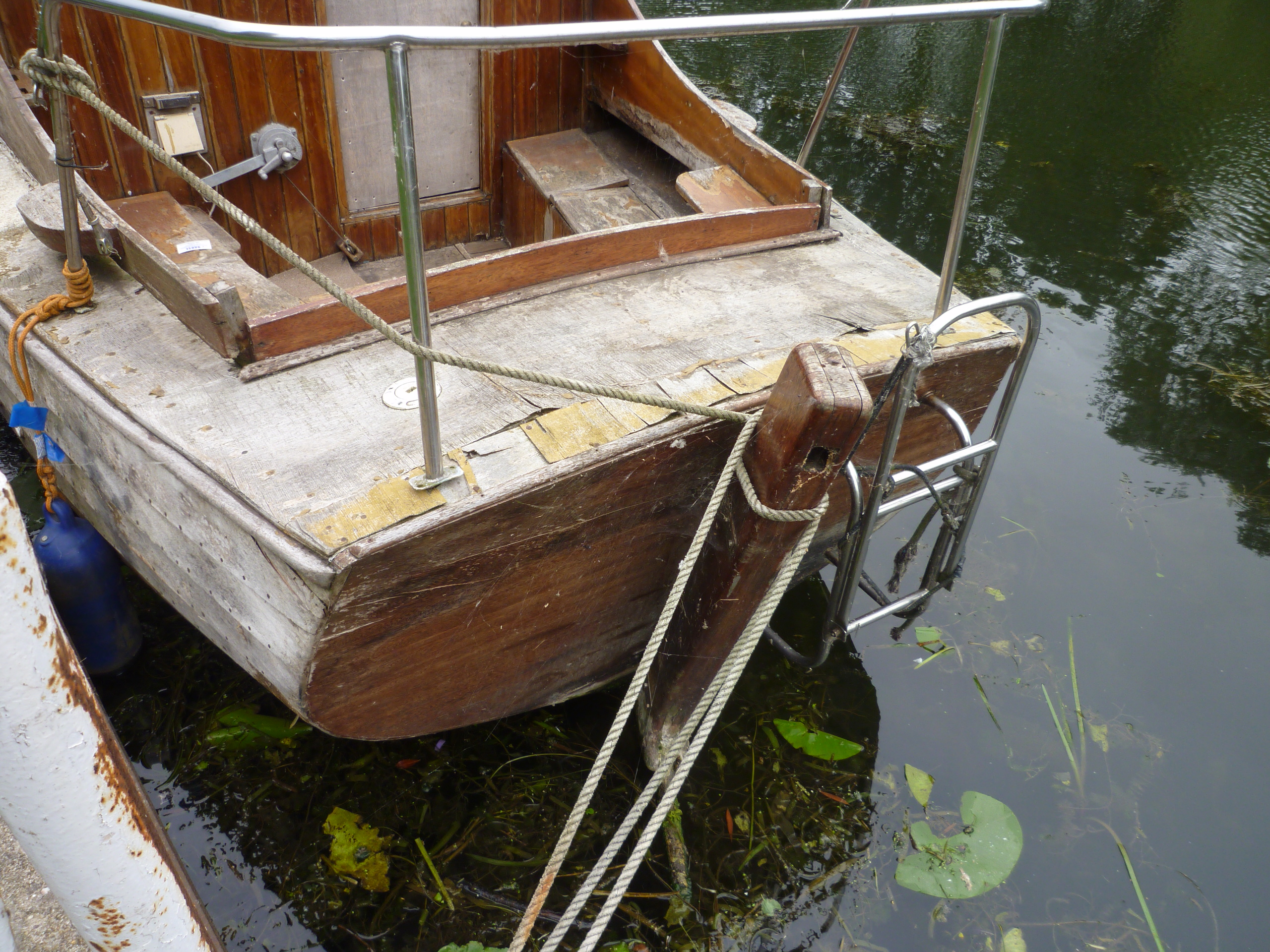
Delaminating ply is no barrier to rain.
Even on a well-maintained Finesse, the junctions between the cabin sides at the front of the boat are prone to leaks. This is one area where capillary action seems to be impossible to overcome; the finer the gap, the more rainwater will crawl along up, down and along, even defying gravity. These corners can leak even when there is no visible flaw and sealant has been generously applied.
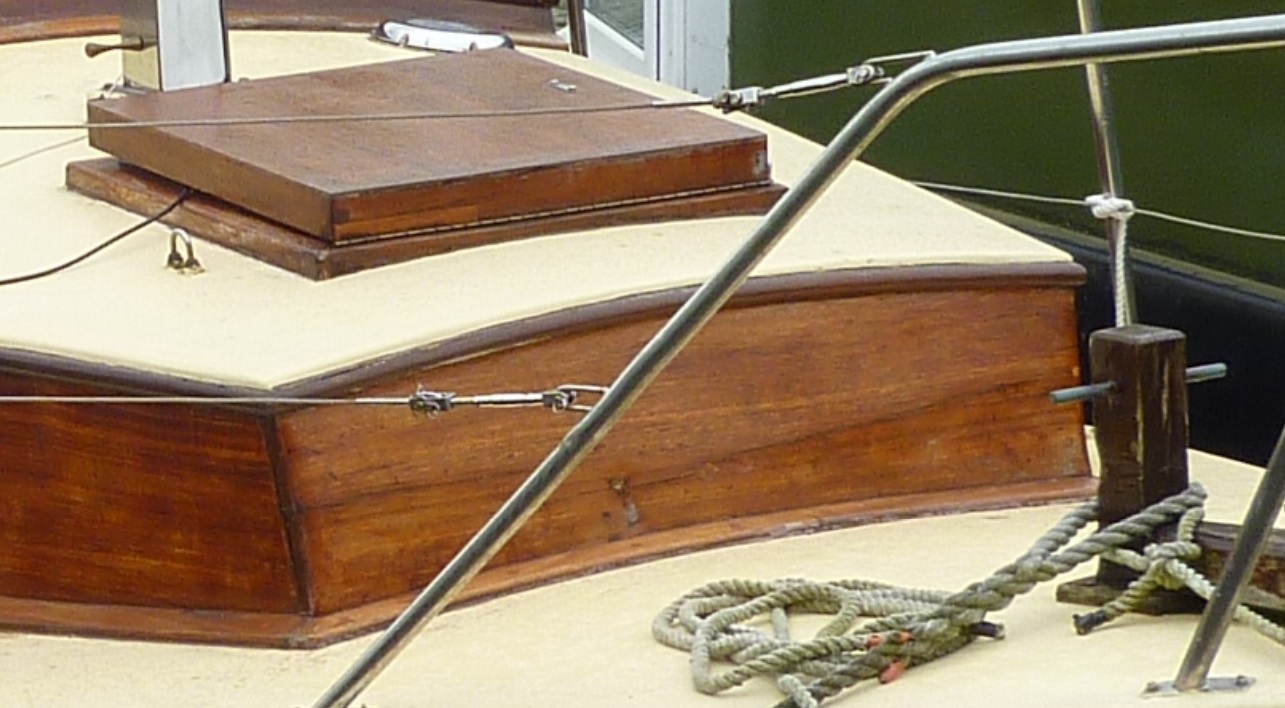
The hatch- where water seems to be able to crawl up the coamings and then drip down- and the right-angled upright corners at the front of the cabin. There is also a shake (crack) running across most of the cabin front.
The cabin sides, running through the saloon, are made from single slab planks of iroko and usually contain shakes that start in the window cut-outs and then gape open as the wood dries in the summer. Luke Vinten shared a method on Facebook in May 2020 of routing the cracks and inserting hardwood patches (a ‘dutchman repair’):
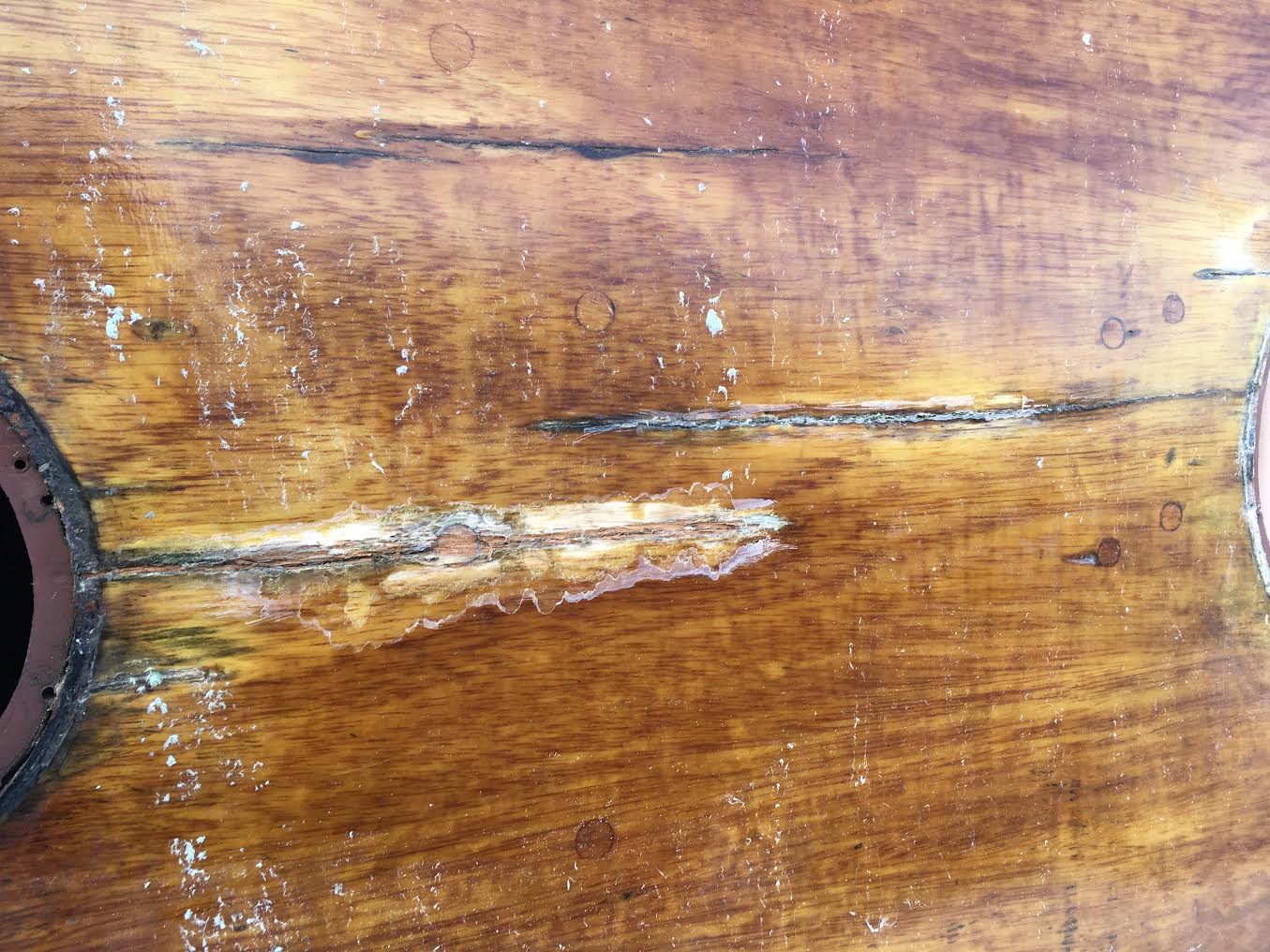
Typical shakes in the cabin sides
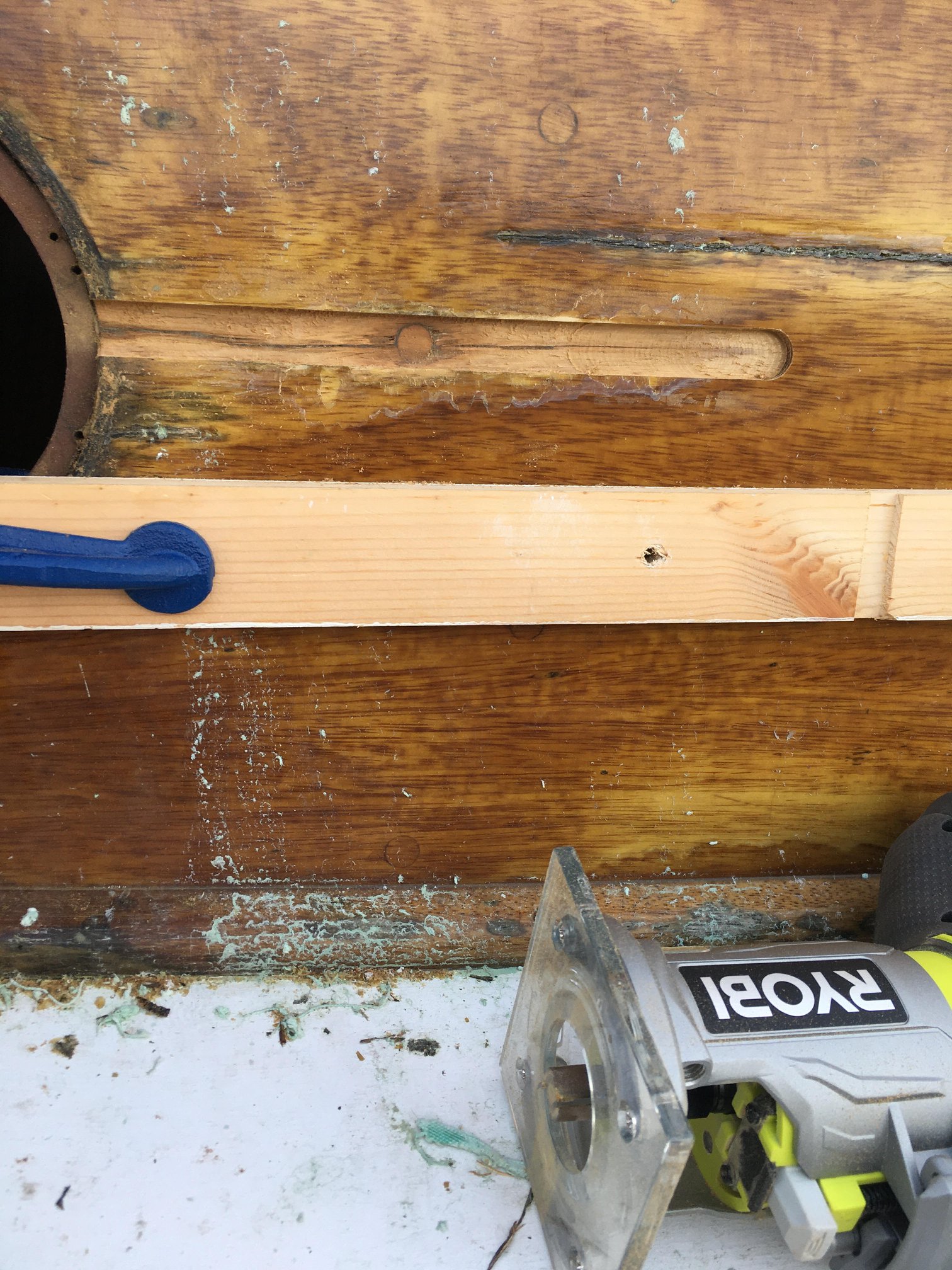
A batten helps to guide the router bit
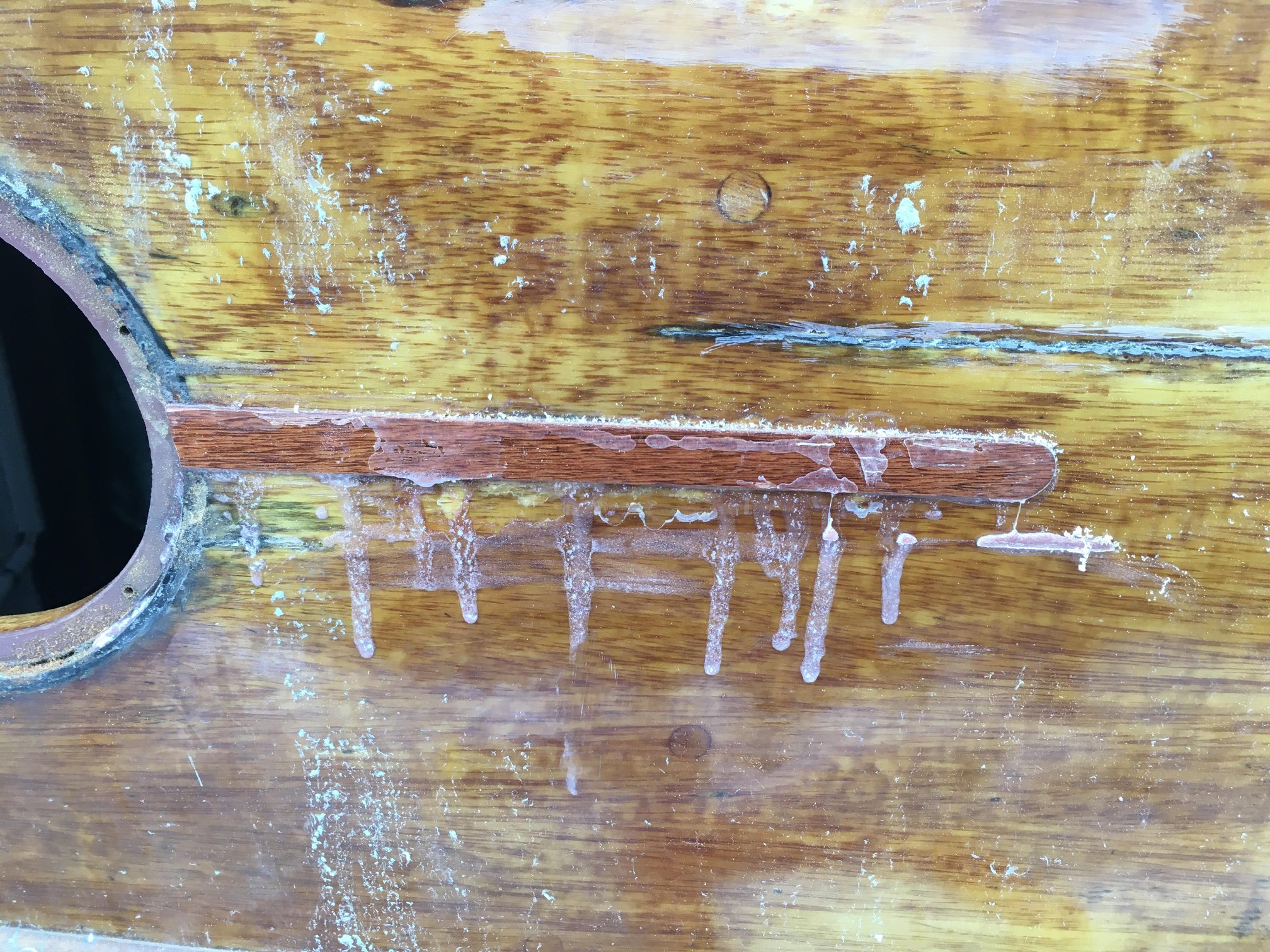
Hardwood ‘lolly stick’ inserted with epoxy adhesive
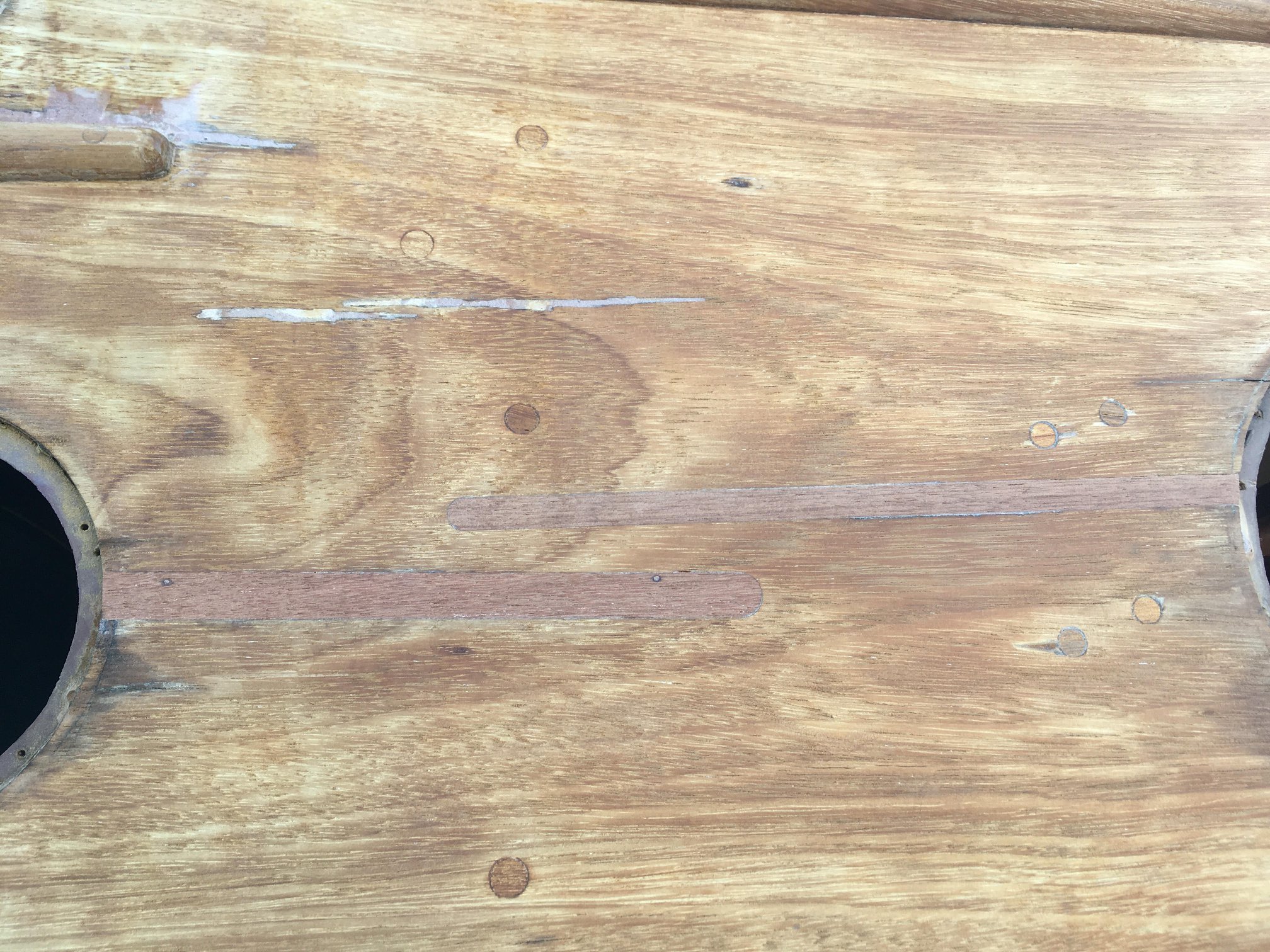
Sanded down prior to varnishing
I admit to being too lazy to do this modification, which requires the windows to be removed. I fitted a pair of ‘eyebrows’ over the saloon windows to deflect rain running down from the cabin roof, but basically I have simply forced waxy wood filler into the shakes and accepted that I need to put more in during the hot summer and scrape off the excess when the temperature cools down.
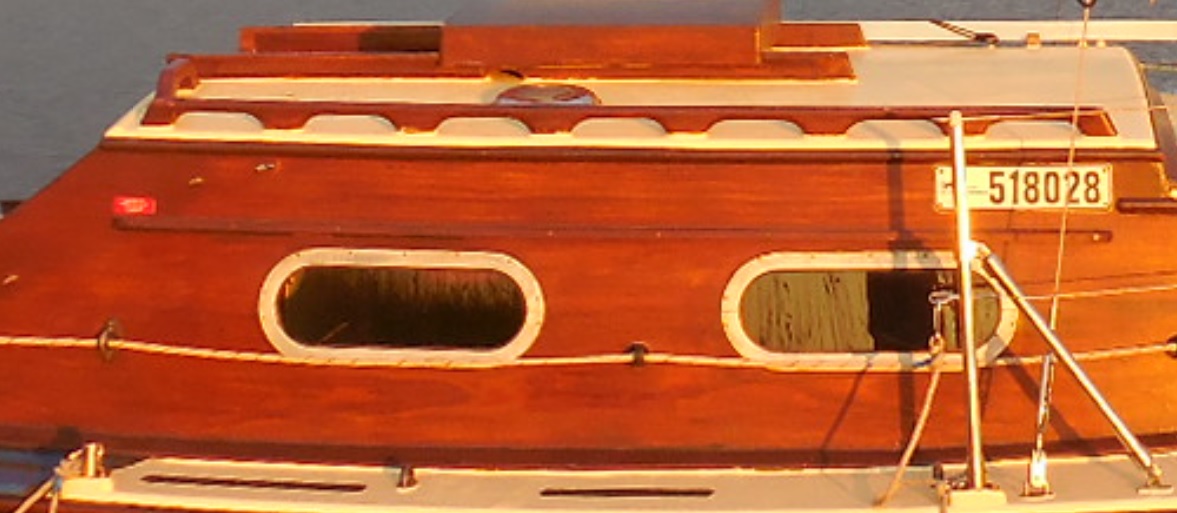
Iroko ‘eyebrows’ deflect some water running off the roof
Ultimately, covers can help to keep the rain out and the worst of the direct sun off the boat. If you want to live onboard, fitting these is worth the time and effort.
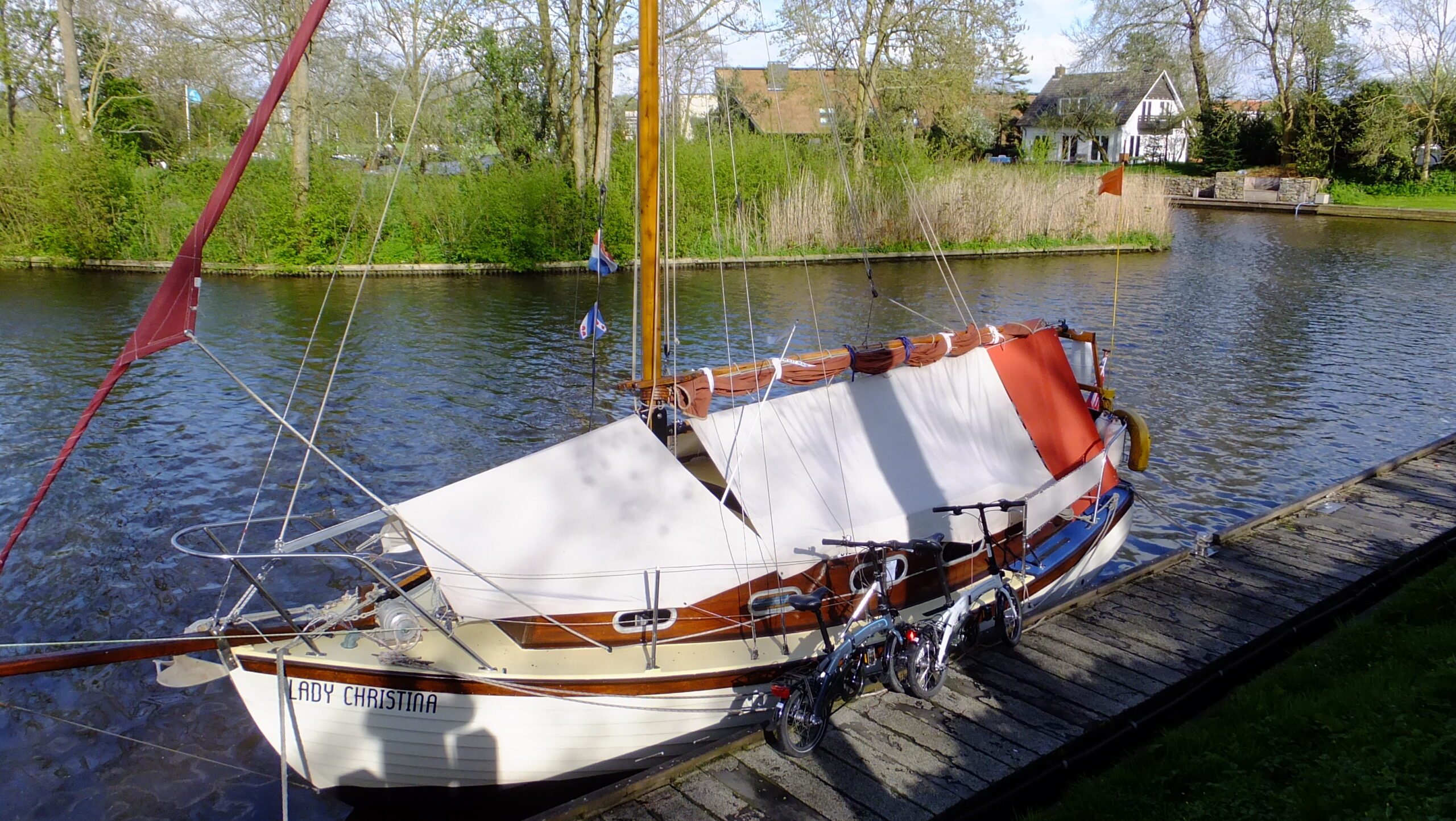
There are many ways to cover a boat! The rear covers are over the boom (gaff rig) and the front cover is over a gin pole, used to raise and lower the mast.
Condensation will eventually cause the degradation of the cabin roof paintwork and maybe even damage the innermost ply face. Solar extract fans will help the boat to breath (see http://www.finesse-owners-association.co.uk/twelve-gadgets-for-your-finesse/).
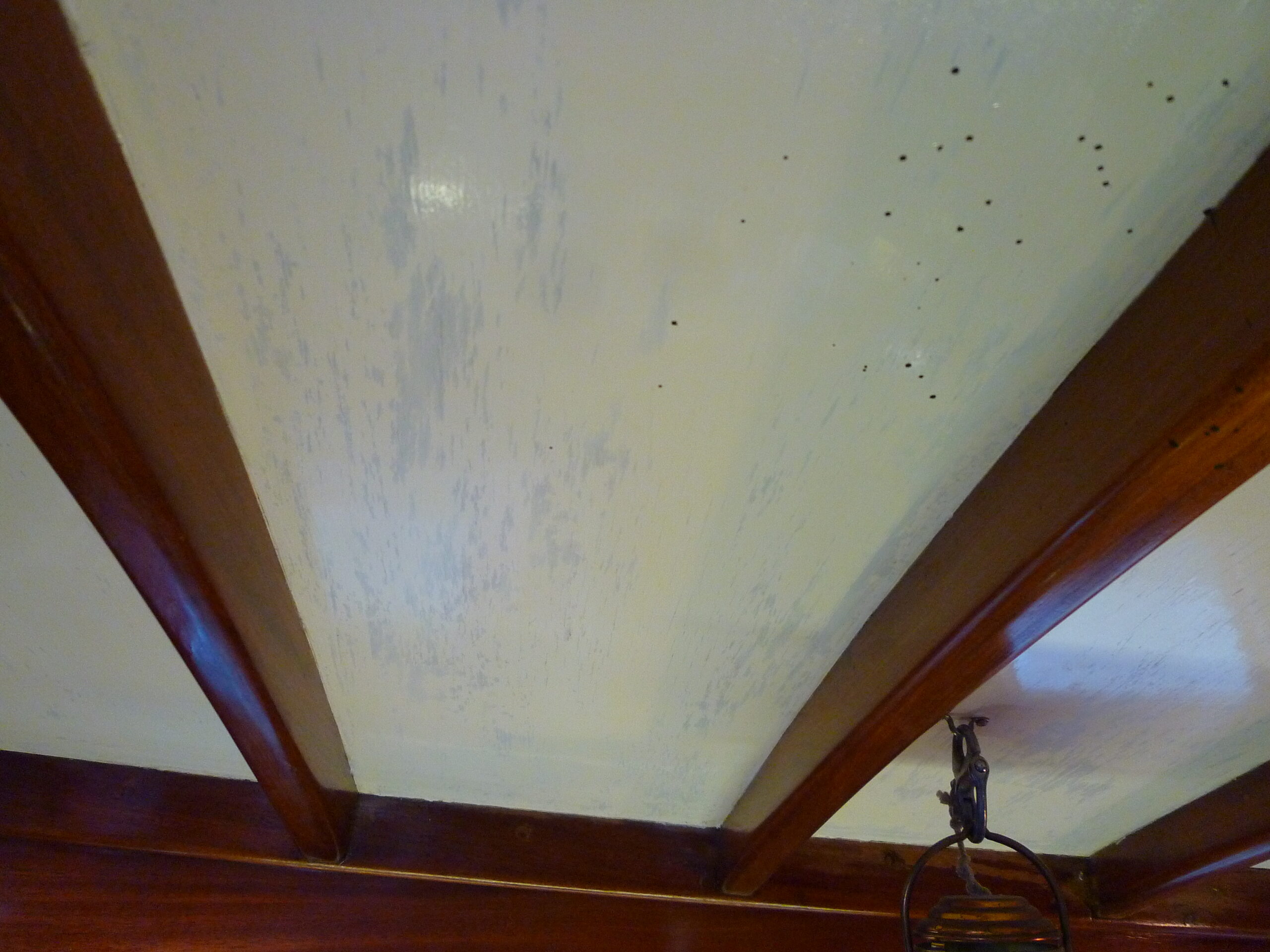
Hairline crazing causes degradation of inside roof surface (Mariette)
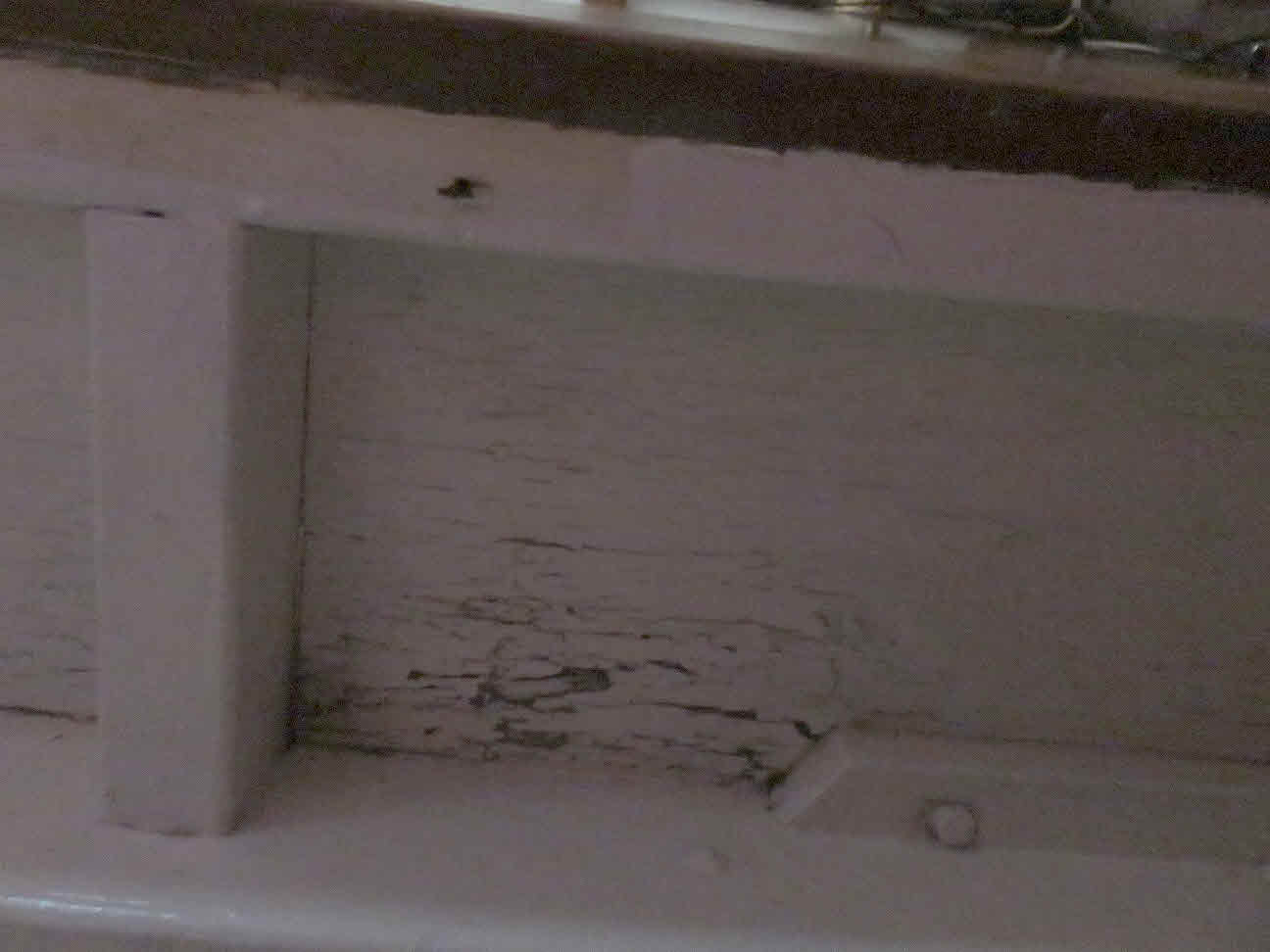
Ditto (Josie)
Eventually, unless running repairs take place, things can get out of hand and then the weather can really get inside. Without a protective finish, the sun can really dry out the timbers.
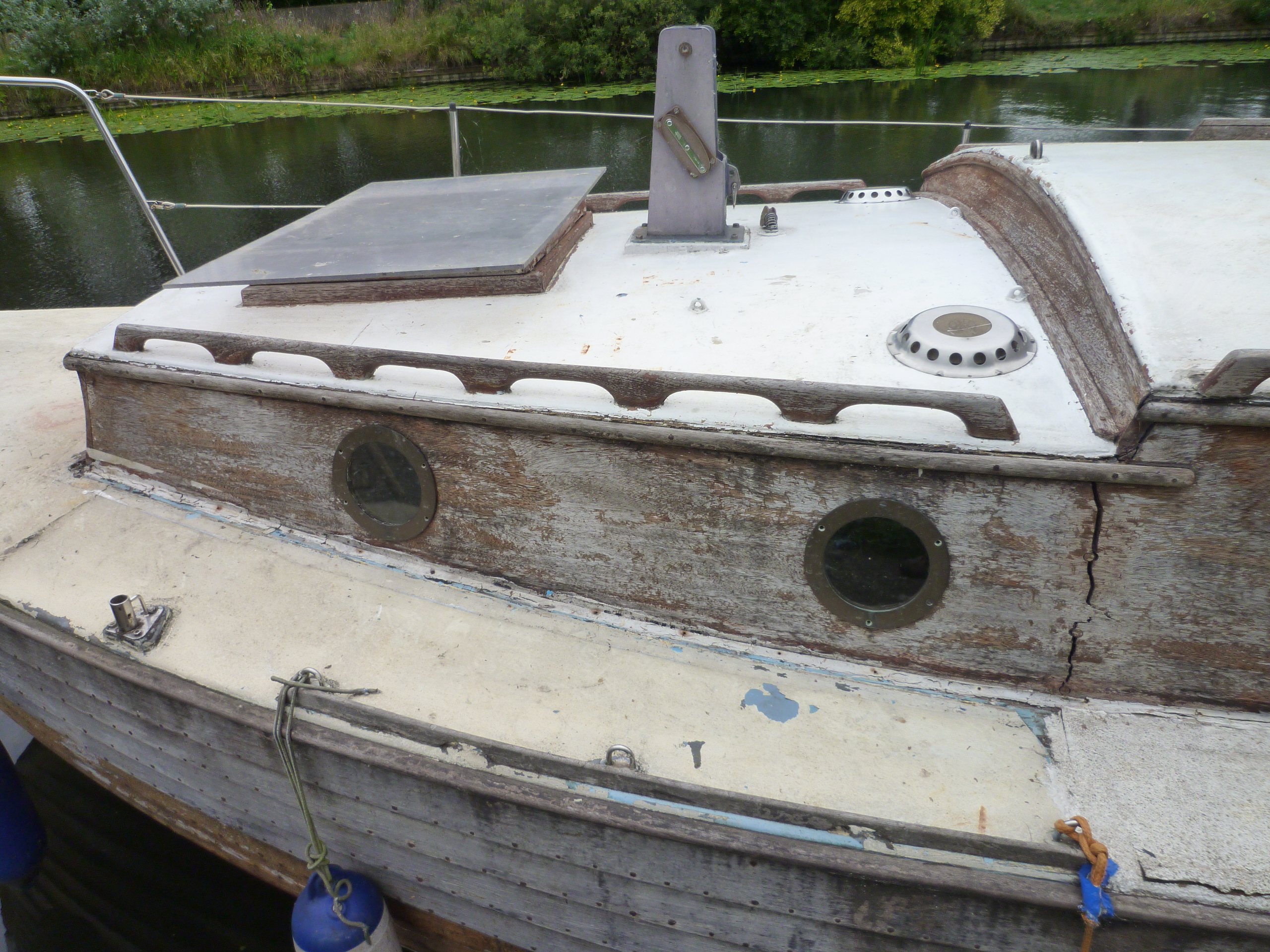
Here the cabin side has completely parted, this time on a vertical line
The bottom line: act as soon as you see a problem. It doesn’t have to be perfect to keep most of the weather at bay, and the DIY market has lots of good, simple wood preservation products. For the deck surfaces, Epiphanes Yacht Enamel paint is a good choice.

See a problem- deal with it as soon as you can http://www.finesse-owners-association.co.uk/deck-maintenance-part-2-edges-and-heads-of-fastenings/
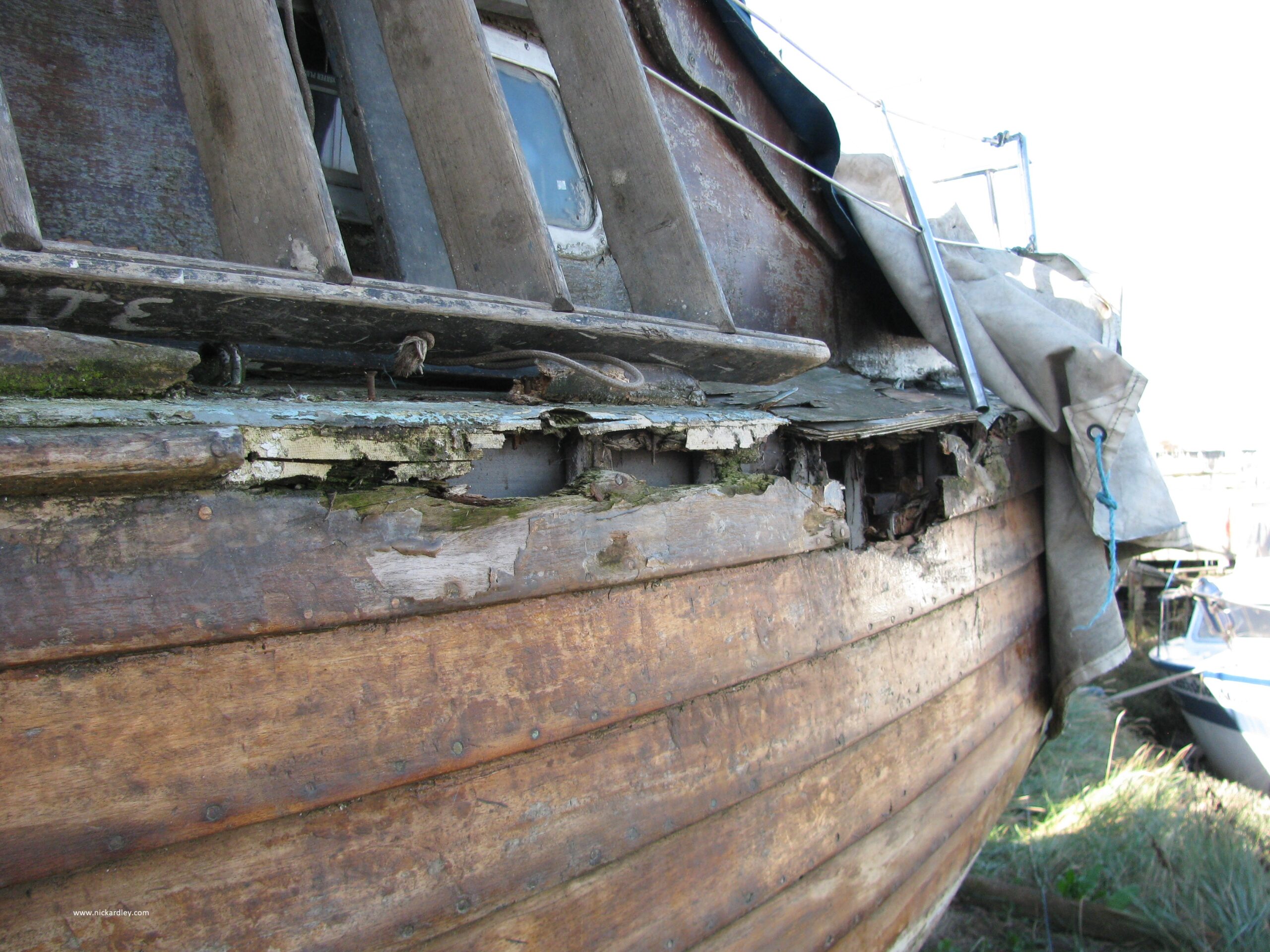
It’s the rain that does it (Rapport)


